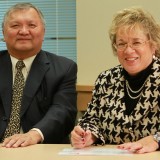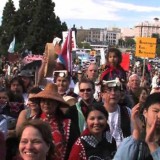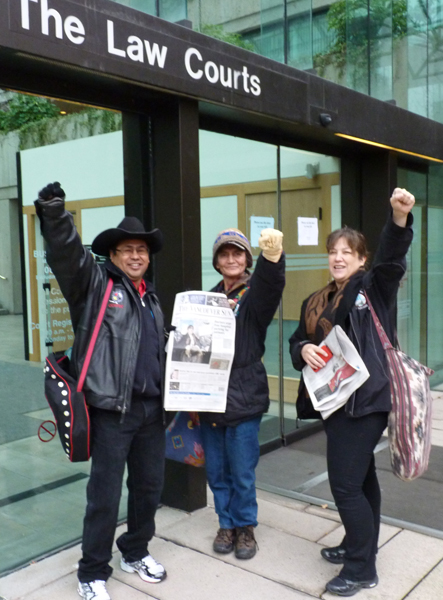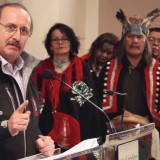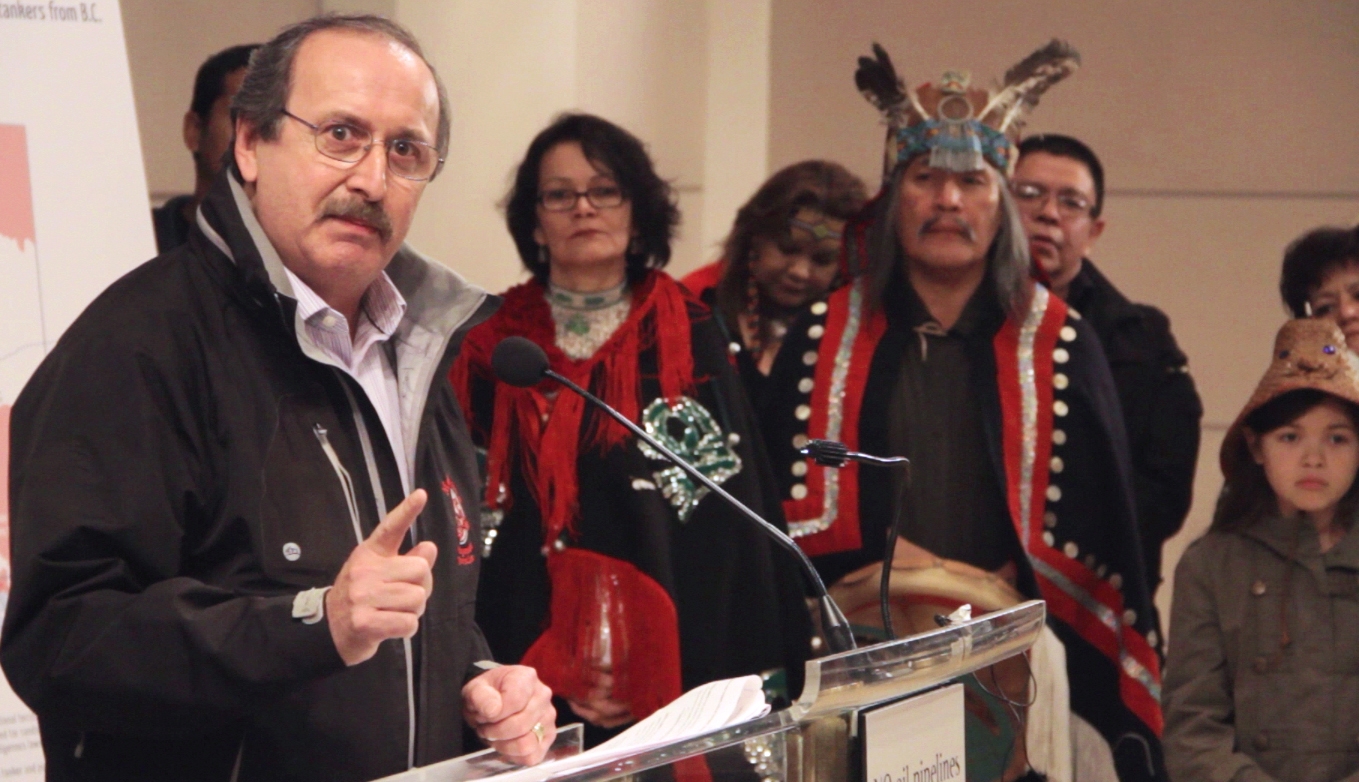The FIPA Environmental Assessment is an important, official avenue to request the delay of the FIPA Order in Council
The vast implications of the now highly controversial Canada-China trade deal known as FIPA (Foreign Investment Promotion and Protection Agreement) are mind-boggling and Canadians have not had the time to fully comprehend what we are being entered into by our federal government.
Numerous campaigns have been launched to bring attention to the issue and prevent ratification of the agreement – most involving online petitions.
Yet there is an official avenue for public opposition that has been largely missed and presents a clear path to delaying FIPA or even preventing its ratification.
The Conservative government must pass an Order in Council in order to facilitate ratification. This is done at the cabinet table.
If you act now and submit your feedback outlining the grave concerns and serious shortcomings in the FIPA Environmental Assessment process, which is still active and open, we may be able to convince cabinet to delay the Order in Council until the pivotal Environmental Assessment is properly undertaken and completed.
You have until Remembrance Day, November 11, 2012, to file your letter with the FIPA EA and we encourage you to copy all Federal Cabinet members and BC Conservative MPs with your submission.
YOU MUST ACT NOW.
We have provided below a short form letter including some key FIPA concerns for your consideration.
We have also provided below a list of the Conservative members of Cabinet who will be deliberating the enabling Order in Council and their email contacts – as well all BC Conservative MPs and their contacts, for our readers in British Columbia.
Simply copy and paste them into your email to ensure they are copied on your submission, and email to EAconsultationsEE@international.gc.ca by Nov. 11.
——————————————————
Sample FIPA EA Submission
To Environmental Assessments of Trade Agreements,
I am copying Conservative MPs and Cabinet Members on this brief submission to the Final Environmental Assessment of the Canada-China FIPA.
I am submitting these comments to the Final EA before the November 11th deadline to request an extension for this important process, while urging cabinet to delay the FIPA-enabling Order in Council until the serious concerns outlined in this letter and by many other Canadians have been properly addressed.
It has been confirmed that no public input has been received over the 11-year FIPA EA process, including two separate month-long periods requesting feedback from stakeholders and the general public.
The conclusions of the Final EA and its public consultation and engagement practices reveal a great number of shortcomings – which draw into question the need for this agreement, while raising dire concerns of how it came about and grave reservations with respect to its recommendations.
It is stated in the Final EA analysis that FIPA will not result in any investment, nor will it impact the environment.
Given these conclusions, and the lopsided risk-benefit analysis provided by credible independent analysts, I am requesting that the FIPA EA process be extended to include a review of these contradictory analyses and conclusions.
I also believe the domestic consultations and engagement were not properly conducted, resulting in no feedback or input. The recent outpouring of public concern clearly suggests this lack of EA submissions does not accurately reflect the level of public concern about the issue. Therefore, I also request the opportunity to revisit and extend this vital component of the Environmental Assessment.
The Canada-China FIPA is of concern for a number of reasons, which have been raised through recent independent, expert analysis. These concerns include:
- FIPA works to ‘lock in” the much diminished environmental regulatory regime recently ushered in by the Harper Omnibus Bill C-38, the full impacts of which have yet to be seen or understood
- FIPA potentially negates the ability of government to legislate changes in environmental regulations, royalty rates, subsidies and any other laws that impact profitability
- FIPA has serious constitutional implications which could have grave impacts on the environment, economy and Canadian sovereignty
- The FINAL FIPA EA was to be included and available at the end of negotiations in February, yet no public comment has been included during the entire 11 years of negotiations
- FIPA may have serious ramifications on the Treaty Process and on constitutional obligations to consult and accommodate First Nations where their traditional territories, resources and cultural practices are at risk from industrial development
I would like these issues addressed before Cabinet considers the FIPA OIC. Therefore, a delay in Cabinet deliberation of the OIC is imperative.
Sincerely,
Concerned Citizen
——————————————————
Send your letter to this address: EAconsultationsEE@international.gc.ca
It is important that you also copy Cabinet – in addition, you may wish to include your MP or the full list from BC:
Cabinet (full list):
diane.ablonczy@parl.gc.ca,leona.aglukkaq@parl.gc.ca, rona.ambrose@parl.gc.ca, keith.ashfield@parl.gc.ca, john.baird@parl.gc.ca, maxime.bernier@parl.gc.ca, steven.blaney@parl.gc.ca, ron.cannan@parl.gc.ca, michael.chong@parl.gc.ca, tony.clement@parl.gc.ca, john.duncan@parl.gc.ca, julian.fantino@parl.gc.ca, ed.fast@parl.gc.ca, diane.finley@parl.gc.ca, jim.flaherty@parl.gc.ca, steven.fletcher@parl.gc.ca, gary.goodyear@parl.gc.ca, Bal.Gosal@parl.gc.ca, stephen.harper@parl.gc.ca, laurie.hawn@parl.gc.ca, jason.kenney@parl.gc.ca, peter.kent@parl.gc.ca, mike.lake@parl.gc.ca, denis.lebel@parl.gc.ca, peter.mackay@parl.gc.ca, ted.menzies@parl.gc.ca, rob.merrifield@parl.gc.ca, james.moore@parl.gc.ca, rob.moore@parl.gc.ca, rob.nicholson@parl.gc.ca, gordon.oconnor@parl.gc.ca, Joe.Oliver@parl.gc.ca, christian.paradis@parl.gc.ca, Peter.Penashue@parl.gc.ca, lisa.raitt@parl.gc.ca, gerry.ritz@parl.gc.ca, andrew.scheer@parl.gc.ca, gail.shea@parl.gc.ca, vic.toews@parl.gc.ca, tim.uppal@parl.gc.ca, Bernard.Valcourt@parl.gc.ca, peter.vanloan@parl.gc.ca, alice.wong@parl.gc.ca, lynne.yelich@parl.gc.ca
BC MPs:
Dan.Albas@parl.gc.ca, ron.cannan@parl.gc.ca, john.duncan@parl.gc.ca, ed.fast@parl.gc.ca, Kerry-Lynne.Findlay@parl.gc.ca, nina.grewal@parl.gc.ca, richard.harris@parl.gc.ca, russ.hiebert@parl.gc.ca, randy.kamp@parl.gc.ca, james.lunney@parl.gc.ca, colin.mayes@parl.gc.ca, cathy.mcleod@parl.gc.ca, james.moore@parl.gc.ca, andrew.saxton@parl.gc.ca, Mark.Strahl@parl.gc.ca, mark.warawa@parl.gc.ca, john.weston@parl.gc.ca, David.Wilks@parl.gc.ca, alice.wong@parl.gc.ca, Wai.Young@parl.gc.ca, Bob.Zimmer@parl.gc.ca
By riding:
- Albas, Dan – Okanagan—Coquihalla: Dan.Albas@parl.gc.ca
- Cannan, Ron (Hon.) – Kelowna—Lake Country: ron.cannan@parl.gc.ca
- Duncan, John (Hon.) – Vancouver Island North: john.duncan@parl.gc.ca
- Fast, Ed (Hon.) – Abbotsford: ed.fast@parl.gc.ca
- Findlay, Kerry-Lynne D. – Delta-Richmond East: Kerry-Lynne.Findlay@parl.gc.ca
- Gewal, Nina – Fleetwood-Port Kells: nina.grewal@parl.gc.ca
- Harris, Richard M. – Cariboo-Prince George: richard.harris@parl.gc.ca
- Hiebert, Russ – South Surrey-White Rock-Cloverdale: russ.hiebert@parl.gc.ca
- Kamp, Randy – Pitt Meadows-Maple Ridge-Mission: randy.kamp@parl.gc.ca
- Lunney, James – Nanaimo-Alberni: james.lunney@parl.gc.ca
- Mayes, Colin – Okanagan-Shuswap: colin.mayes@parl.gc.ca
- McLeod, Cathy – Kamloops-Thompson-Cariboo: cathy.mcleod@parl.gc.ca
- Moore, James (Hon.) – Port Moody-Westwood-Port Coquitlam: james.moore@parl.gc.ca
- Saxton, Andrew – North Vancouver: andrew.saxton@parl.gc.ca
- Strahl, Mark – Chilliwack-Fraser Canyon: Mark.Strahl@parl.gc.ca
- Warawa, Mark – Langley: mark.warawa@parl.gc.ca
- Weston, John – West Vancouver-Sunshine Coast-Sea to Sky Country: john.weston@parl.gc.ca
- Wilks, David – Kootenay-Columbia: David.Wilks@parl.gc.ca
- Wong, Alice (Hon.) – Richmond: alice.wong@parl.gc.ca
- Young, Wai – Vancouver South: Wai.Young@parl.gc.ca
- Zimmer, Bob – Prince George-Peace River: Bob.Zimmer@parl.gc.ca




